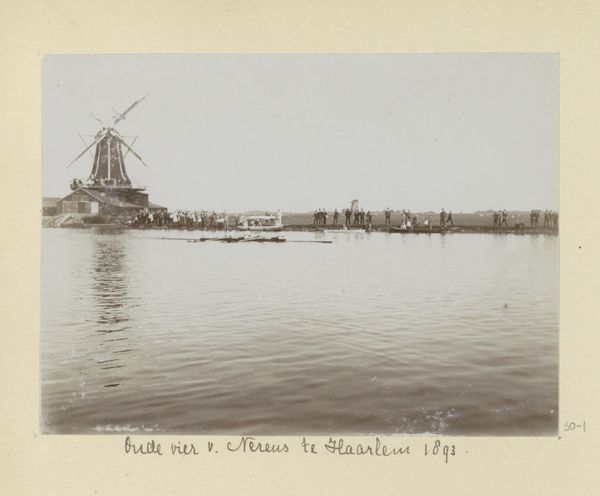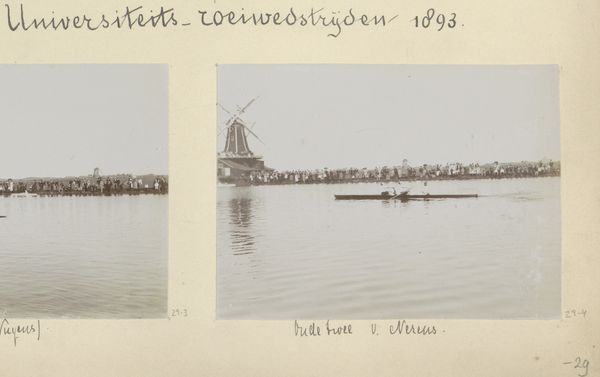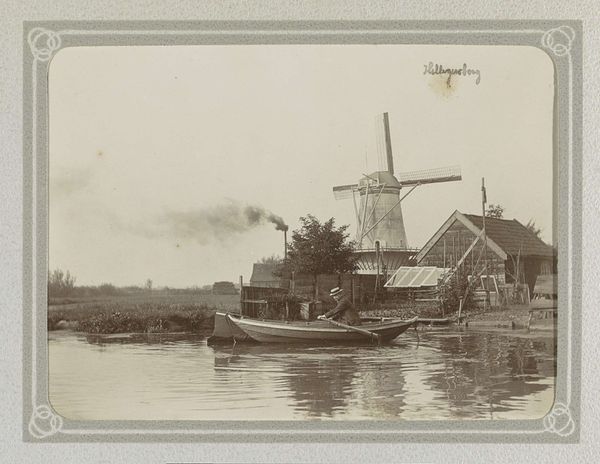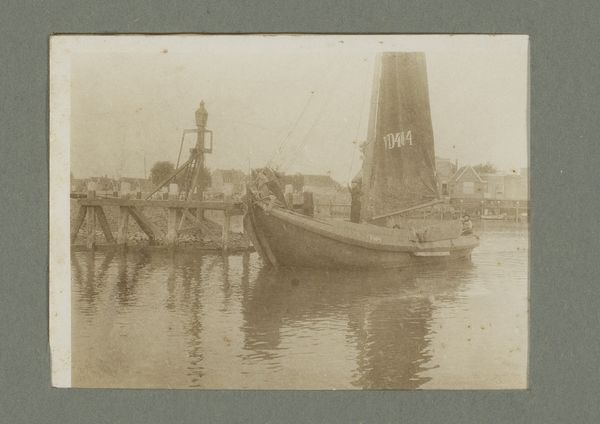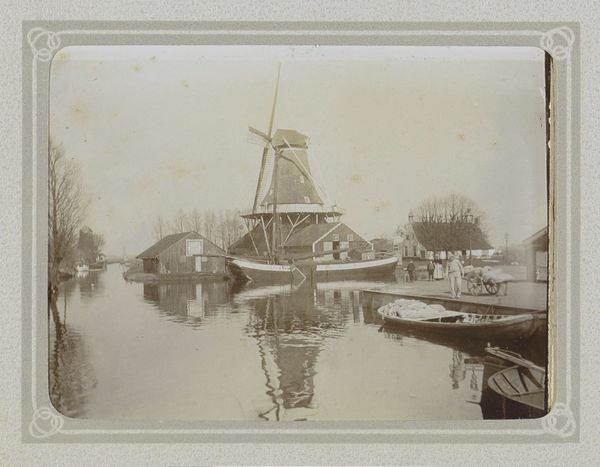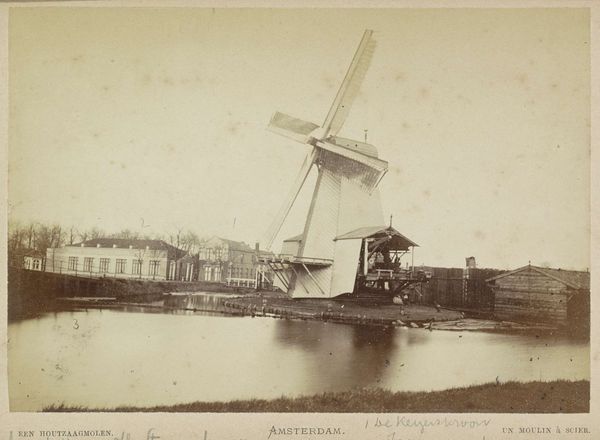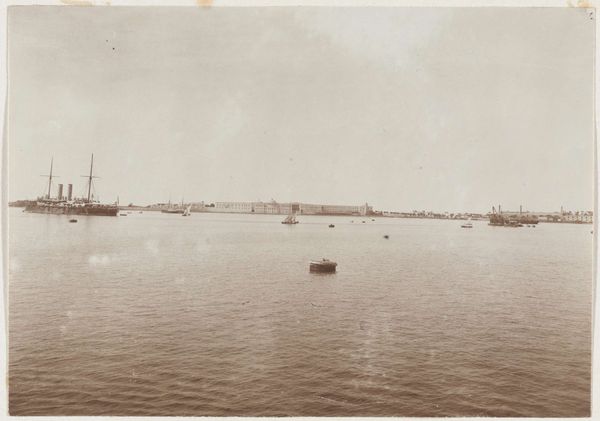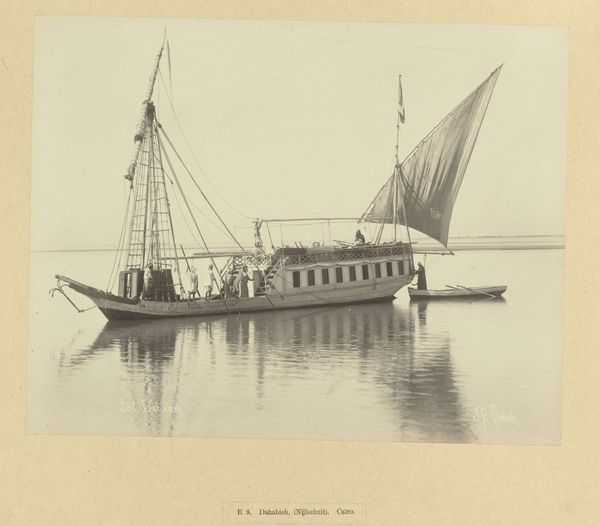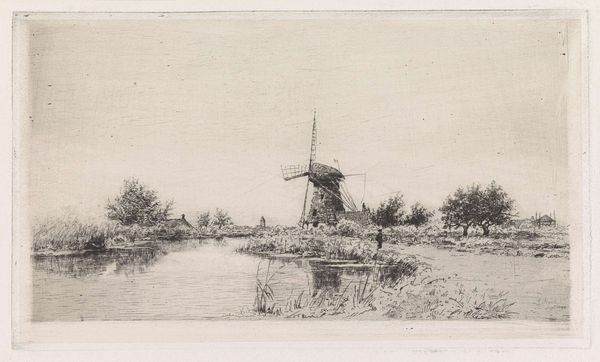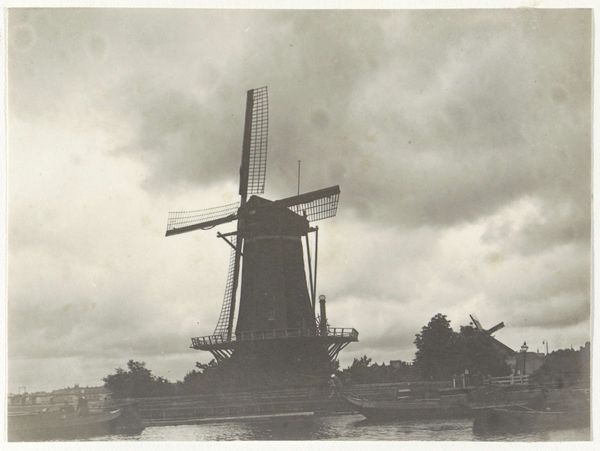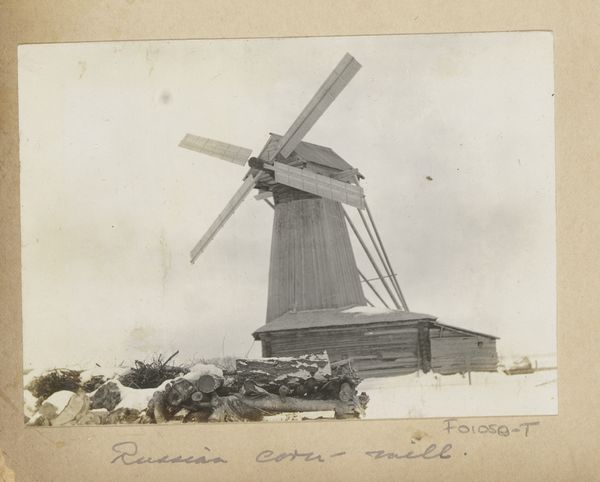
'Jonge Vier' van de Amsterdamse roeivereniging Nereus tijdens de Varsity van 1893 in Haarlem 1893
0:00
0:00
Dimensions: height 81 mm, width 109 mm
Copyright: Rijks Museum: Open Domain
Editor: Here we have Hendrik Herman van den Berg’s gelatin-silver print from 1893, titled "'Jonge Vier' van de Amsterdamse roeivereniging Nereus tijdens de Varsity van 1893 in Haarlem." The photograph captures a rowing race, but there's something very serene about the sepia tones and the soft focus. It almost feels dreamlike. How would you interpret the composition of this piece? Curator: Observe how the artist distributes tonal value. The photographic gelatin silver medium yields an almost monochromatic scale, stratified horizontally to delineate space. The artist leverages this atmospheric perspective, diminishing detail in the background elements such as the windmill. This directs our gaze, primarily focusing on the horizontal lines that divide the photo; Water, boat, onlookers, and the upper ether. Do you perceive this formal construction as hierarchical or something else? Editor: Hierarchical? Perhaps... the waterline certainly feels weighty, but the sky feels equally significant, balancing it out. What's the effect of capturing motion through such a still medium? Curator: Indeed, this intersection warrants closer analysis. Gelatin-silver print technology fixes time; yet, here it creates the semblance of motion, subtly evoking Impressionistic ideals through tonal gradation. This subverts expectations of mimetic capture by creating a dynamic aesthetic object within a rigid plane, a paradox that foregrounds material potential. Do you notice any compositional elements creating movement? Editor: Now that you mention it, the blurry ripples in the water and the repetition of figures along the bank suggest a fleeting moment. Thank you for elucidating the artistic dynamism! I initially underestimated how intentional those apparent imperfections must be. Curator: Precisely. Recognizing formal tensions, we perceive greater meaning in otherwise unassuming artworks.
Comments
No comments
Be the first to comment and join the conversation on the ultimate creative platform.
